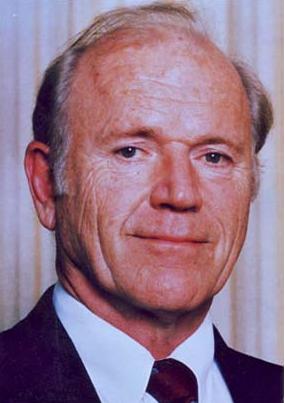Harry Buncke, MD, passes away

Dr. Harry Buncke, a pioneer in the field of microsurgery who reattached severed fingers, toes and tongues and trained hundreds of surgeons how to do the same, died Sunday in San Francisco at the hospital where he opened a clinic in 1970. He was 85.
Dr. Buncke suffered head injuries during a fall in December 2006 and died of complications at the Davies campus of California Pacific Medical Center. Friends and colleagues described him as a patient and persistent researcher who changed what people thought was possible in the operating room.
"He founded the field of reconstructive microsurgery in the United States," said fellow plastic surgeon Rudy Buntic.
In true Silicon Valley fashion, Dr. Buncke developed his early surgical techniques in a laboratory he built in the garage of his Hillsborough home in the 1960s. He worked under a microscope using fine silk sutures so thin they float in the air like dust motes. A key innovation was to bond a microscopic needle directly to the thread, dispensing with the needle's eye, which was just wide enough to tear holes in the tiny blood vessels during attempts to stitch them together.
In 1964, with his dermatologist wife, Constance Buncke, assisting, he succeeded in reattaching an ear of a laboratory rabbit. It was an experiment that would have caused most scientists to give up in frustration. Fifty-one prior surgeries had failed.
Dr. Buncke had a knack for making headlines. In 1972, he and a team at San Francisco's Franklin Hospital - later to be called Ralph K. Davies Medical Center - performed the first toe-to-thumb transplant in the United States. A Redwood City firefighter had lost his thumb in a power saw accident. Dr. Buncke's team removed the man's healthy right big toe and replaced the missing right thumb.
His work took Dr. Buncke to China, where surgeons were also experimenting with reattachment of severed limbs. In 1984, during a nine-hour surgery at Davies, Dr. Buncke and his team reattached the left foot of a 21-year-old Cotati man that had been cut off cleanly by a machine that crushes and cuts up boxes.
In 1997, Dr. Buncke and Buntic successfully reattached the tongue of a 15-year-old Bay Area boy who had bit it off in an automobile accident. The teen recovered, and his ability to speak was restored.
Perhaps Dr. Buncke's most rewarding operation was the reconstruction of the right hand of Dr. Francisco Bucio, who lost his four fingers in the Mexico City earthquake of 1985. Dr. Buncke transplanted two toes - one from each foot - to the shattered right hand. It enabled Dr. Bucio to use a "three-finger pinch" with that hand, and the young physician went on to an illustrious career as a plastic surgeon.
Such exploits earned Dr. Buncke accolades from his profession. In 2001, the America Society of Plastic Surgeons named him one of the top 10 plastic surgeons of the 20th century. He is a former president of the American Association of Plastic Surgeons and the American Society for Surgery of the Hand, and a former chairman of the International Society of Reconstructive Medicine.
"He was an imaginative fellow, industrious and innovative - and he was a superb surgeon," said Nobel laureate Dr. Joseph Murray, a friend and fellow pioneer in surgery who at Harvard's Brigham Hospital in 1954 performed the first successful kidney transplant.
Dr. Buncke is also revered for his role in teaching others this exacting surgical art. He served as a clinical professor of surgery at both Stanford University and UCSF.
"Dr. Buncke has trained several generations of productive leaders in the field of microsurgery, all of whom owe him a great debt of gratitude," said Robert Chase, retired professor of surgery at Stanford. "He fully deserves his title as 'the father of clinical microsurgery.' "
Dr. Buncke was born in Iroquois Falls, Ontario - a remote northern Canadian town where his American father worked as a paper mill engineer. The family moved to another mill town, Rumford, Maine, when Harry was 8, and he was raised there until he went to Lehigh University in Bethlehem, Pa.
His studies there were interrupted by America's entry into World War II. He became a submariner, serving on the legendary Spadefish, which infiltrated waters just off the coast of Japan and was credited with sinking 21 enemy ships.
After the war, while his submarine was being decommissioned at Mare Island, he met his future wife, Constance Millette. The couple married before attending New York Medical School together - sharing not only classes but cadavers. Dr. Buncke eventually specialized in plastic surgery, Constance Buncke in dermatology.
After moving to Hillsborough, the couple raised four children, three of whom became physicians. Dr. Buncke died just two days after the couple's 62nd anniversary.
He is survived by his wife, Constance, of Hillsborough; sons Greg of Hillsborough, Geoff of Portland, Ore., and Paul of Tahoe City; daughter Adele of Hillsborough; and six grandchildren.
Donations may be made to the Buncke Microsurgical Foundation, 101 N. El Camino Real, San Mateo, CA 94402.
